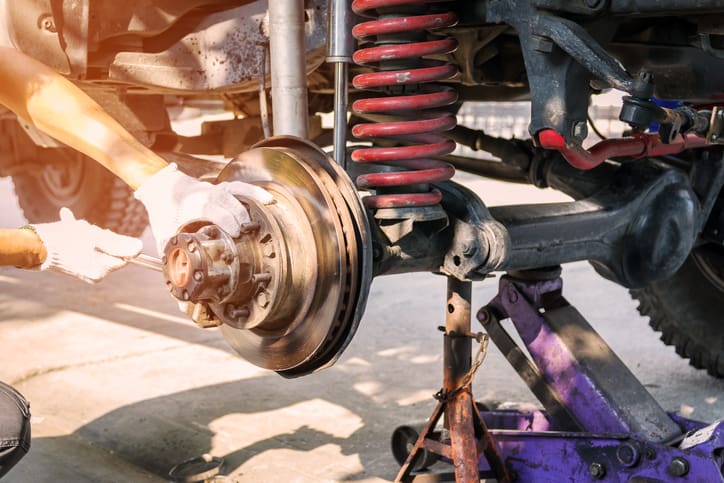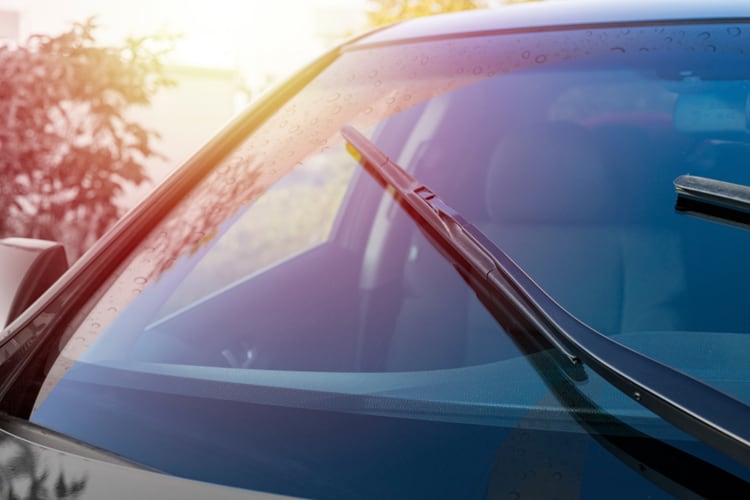Imagine taking a long trip when each bump in the road sends your automobile soaring into the air before it thumps back down. Doesn’t it seem fairly unpleasant? Your car’s suspension system enters the picture here. This tutorial was created just for you if you’re intrigued and continuously wondering what car suspension is.
The car suspension system may seem like it should be pretty simple to operate, but it’s actually more difficult and involved than it appears. It not only provides you with those relaxing trips, but it is also very necessary for both your safety and the safety of the vehicle. Let’s examine how the vehicle suspension system works.
Functions of a car suspension system
Let’s first examine the major purposes of automotive suspension: absorbing shock and maintaining wheel contact with the ground. Simply put, suspension refers to a mechanism that maintains an object’s airborne position. As a result, when sleeping in a hammock, you would be suspended above the ground and shielded from the ground’s shock and vibrations. The rationale for why automobiles need such a complex system is rather obvious. The ground’s friction and shock should be kept to a minimum.

Every little rock and bump on the road would damage your automobile if your suspension system wasn’t there, making for the most miserable ride for everyone. To make sure you get the suspension system’s most fundamental function, I’m simplifying this. It aids in keeping the tyres in touch with the road surface in addition to absorbing the ground’s friction, gravitational, and impact forces.
Read more: 5 red flags that your car suspension needs attention
Your car’s axle and wheels are tied to the suspension system since the tyres are what have direct contact with the road. This results in the suspension system being subjected to each shock and vibration, further dampening the impact. To better understand it, the contemporary suspension system’s spring mechanism forces the wheel to the ground anytime it is in flight. Consequently, your automobile briefly lifts off the ground when it encounters a speed bump.
To restore contact with the road, the suspension system forces it back to the ground. The inside wheels also rise off the ground as you make a quick turn. Your automobile would flip over if the suspension system weren’t in place. But the automobile is brought back to the ground by the spring mechanism.
How does car suspension work? What is it?
As previously said, we are already aware of how the car suspension system works. Here, though, we examine its operation. Every wheel and axle are separately suspended as part of the cleverly constructed contemporary automobile suspension system. This implies that the other three wheels will remain in place even if one of them is off the ground. The independent suspension is what is used in this.
If each wheel didn’t have its own suspension system, the automobile would tip over if one wheel lifted and the other on the same side did too. The dependent automobile suspension system is what it is called.
System of Dependent Suspension
In response to your query about what an car suspension is, we now comprehend the dependant system. This design is sometimes found in off-road automobiles or older vehicles, despite not being utilised frequently in more recent models. This arrangement, sometimes referred to as the beam axle design, has both live and dead axles. When there is power steering, the live axle is employed, while the dead axles handle the free-spinning tyres.
This design has two significant flaws.
- The first is that the movement of the tyres will be reliant upon one another. The emphasis will change from keeping the wheels on the ground to keeping the tyres at the same angle to one another. It will be challenging to control the automobile because of the traction in the tyres.
- The weight that is unsprung, or the weight that is not supported by the car’s suspension system, increases as a result of this design, which leads to the second issue. The strain put on the beam suspension system by this extra weight increases vibration, bounce, and friction. Additionally, it could result in a loss of steering control when stopping or accelerating.
Independent Suspension System
The majority of modern automobiles now being built have independent suspension. With the shock absorbers and spring fastened to one end of the frame, the independent construction makes it easier for each wheel to move independently and rise and fall. A wishbone or a control arm may be used by your automobile to attach to the suspension. Wheel alignment and total tyre management are handled by the front-wheel independent system. The steering dynamics are absent from the back wheels yet they share the same connection and elements.
How does the suspension system maintain the vehicle’s grip on the pavement?
You are aware of what automotive suspension is, but did you realise it also aids in keeping the wheel anchored to the road, preventing the car from flipping over? When under some load, this capacity also helps to maintain adequate traction and weight distribution.
For instance, you don’t want to be yanked rearward as you are speeding. To make sure you are relaxed in your seat, the rear suspension must function. In a similar vein, avoid crashing into the dashboard when applying the brakes. This is true even when the automobile is turning quickly. You may picture what would happen if the vehicle’s weight is moved to one side while it is spinning. The suspension system’s function is to prevent the inside tyres from launching off the ground. This is known as body roll. Here are a few traction issues that are frequently linked to the suspension system configuration:
- Bump Steer: When an automobile encounters a bump, the vehicle often steers left or right without the driver turning the wheel. This is proof that the suspension system is not properly aligned.
- Oversteer: When your automobile oversteers, the rear loses traction and spins forward with the tail of the vehicle. Similar to drifting in some ways, but very unsafe and accidental.
- Understeer: The reverse of oversteer, understeer occurs when the car’s front wheels lose grip, causing it to veer far outside of the curve. There are serious safety issues for the driver and passengers if the front wheel comes off the ground.
The parts of the car suspension system
Let’s examine the components of the automobile suspension system that make our vehicle smooth-riding and comfortable.
- Springs
Naturally, springs are a crucial component of the suspension system since they absorb imperfections in the road and support any increased weight on the automobile. The springs are also in charge of maintaining the automobile at a specific height. Coil springs, leaf springs, and torsion bars are the three types of springs utilised in the suspension system.
- Springs Air
These are often seen in high-end vehicles such as buses, lorries, and cars since they promote efficient operation and a comfortable ride. Air compressors that employ the air compression properties of air to lessen shock and vibration power the air springs.
- Dampers
If you’ve ever played with a spring that comes from a pen, you know that it bounces twice or three times before coming to a complete halt when you push and release the spring. Herein lies the role of Dampers. The shock absorber, strut, and anti-sway bars all serve the same objective of reducing or controlling the up-and-down energy.
- Shock-absorbers
Although dampers and shock absorbers have a close working relationship, they operate in various ways. The suspension is compressed and decompressed at a controlled rate thanks to the absorbers, which are cylinders filled with oil. In turn, this stops the springs from bouncing.
Modern shock absorbers (or shocks) are velocity-sensitive, which means they react more smoothly to little bumps and more strongly to large ones. This marks the conclusion of our article on automobile suspension. I hope this clarifies what suspension in a car is for you. Keep checking back for more insightful posts about the workings of cars, the most recent auto news, and much more!

